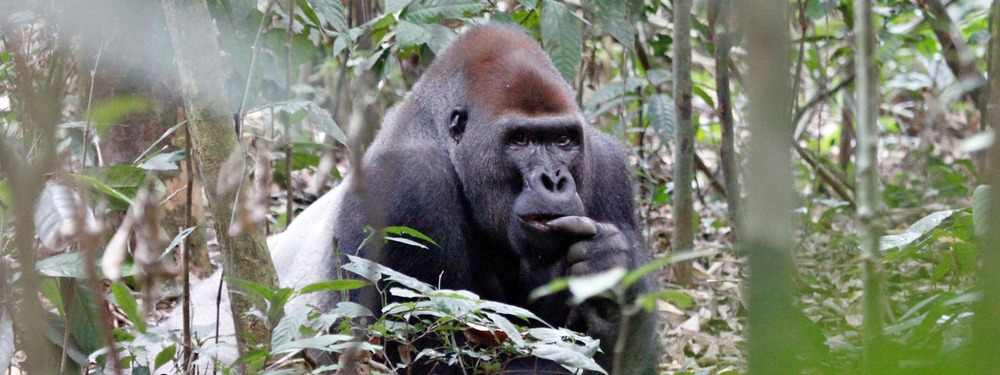mollwollfumble said:
PermeateFree said:
This species is the most common of the gorilla species, but is also classified as critically endangered due the land clearing and poaching.

The western lowland gorilla is the most numerous and widespread of all gorilla subspecies. Populations can be found in Cameroon, the Central African Republic, the Democratic Republic of Congo and Equatorial Guinea as well as in large areas in Gabon and the Republic of Congo. The exact number of western lowland gorillas is not known because they inhabit some of the most dense and remote rainforests in Africa. Significant populations still exist, including in isolated swamps and the remote swampy forests of the Republic of Congo.
Western lowland gorillas can be distinguished from other gorilla subspecies by their slightly smaller size, their brown-grey coats and auburn chests. They also have wider skulls with more pronounced brow ridges and smaller ears. Large numbers have not protected the western lowland gorilla from decline. Because of poaching and disease, the gorilla’s numbers have declined by more than 60% over the last 20 to 25 years. Even if all of the threats to western lowland gorillas were removed, scientists calculate that the population would require some 75 years to recover.
STATUS
Critically Endangered
POPULATION
Unknown
SCIENTIFIC NAME
Gorilla gorilla gorilla
HEIGHT
4 to 5 ½ feet when standing on two feet
WEIGHT
up to 440 pounds
https://www.worldwildlife.org/species/western-lowland-gorilla
> Critically Endangered
“Now, over 100,000 western lowland gorillas are thought to exist in the wild, with 4,000 in zoos”.
Not what I would call “critically endangered”.
>>Population and distribution
The western lowland gorilla is the most widespread and numerous of the four gorilla subspecies.
No accurate estimates of their numbers are possible, as these elusive apes inhabit some of Africa’s densest and most remote rainforests. However, the total population is thought to number up to 100,000 individuals.
In some areas they occur in surprisingly high densities – like in remote swamps or areas with dense leafy growth where they’ve been recorded at exceptionally high densities of almost 10 individuals per square kilometer.
The forests of Congo (Brazzaville) are currently considered to harbour the major population of western lowland gorillas, which are protected by the remoteness of the large, swampy forest areas.<<
https://wwf.panda.org/knowledge_hub/endangered_species/great_apes/gorillas/western_lowland_gorilla/
If humans only numbered 100,000 they would likewise be considered critically endangered, especially as the pressures the gorillas face make their future very uncertain. Being classified as critically endangered provides some protection, particularly from CITES and is therefore an important classification.
CITES (the Convention on International Trade in Endangered Species of Wild Fauna and Flora, also known as the Washington Convention) is a multilateral treaty to protect endangered plants and animals. It was drafted as a result of a resolution adopted in 1963 at a meeting of members of the International Union for Conservation of Nature (IUCN). The convention was opened for signature in 1973 and CITES entered into force on 1 July 1975.
But there again, why should you care?